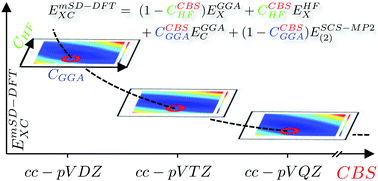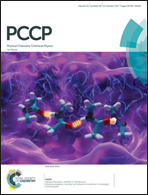General optimization procedure towards the design of a new family of minimal parameter spin-component-scaled double-hybrid density functional theory†
Abstract
A general optimization procedure towards the development and implementation of a new family of minimal parameter spin-component-scaled double-hybrid (mSD) density functional theory (DFT) is presented. The nature of the proposed exchange–correlation functional establishes a methodology with minimal empiricism. This new family of double-hybrid (DH) density functionals is demonstrated using the PBEPBE functional, illustrating the optimization procedure to the mSD-PBEPBE method, and the performance characteristics shown for a set of non-covalent complexes covering a broad regime of weak interactions. With only two parameters, mSD-PBEPBE and its cost-effective counterpart, RI-mSD-PBEPBE, show a mean absolute error of ca. 0.4 kcal mol−1 averaged over 66 weak interacting systems. Following a successive 2D-grid refinement for a CBS extrapolation of the coefficients, the optimization procedure can be recommended for the design and implementation of a variety of additional DH methods using any of the plethora of currently available functionals.



 Please wait while we load your content...
Please wait while we load your content...